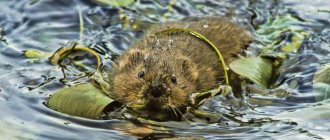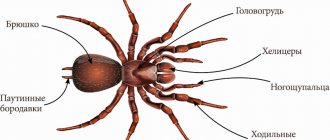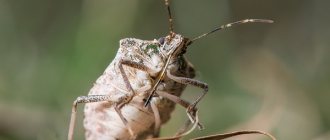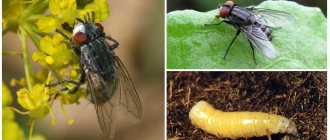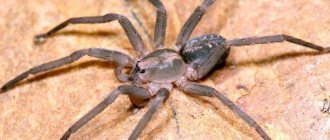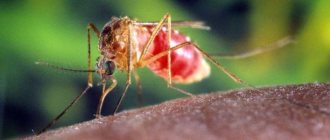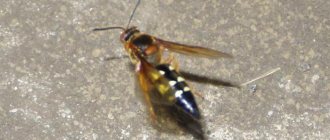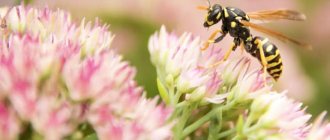Pest flies that live nearby
Among the insects there are garden pests: melon fly, raspberry fly, cherry fly, onion fly and cabbage fly. They should not be confused with Drosophila fruit flies, which, although they are close relatives, do not cause direct harm, as they feed on rotten fruits and berries.
But let's return to garden pests. As you might guess, the cherry fly parasitizes cherries, the melon fly can destroy the harvest of honey-sweet fruits, and the raspberry fly attacks one of the healthiest berries. Onion larvae will eat the entire root crop. The cabbage fly is not particularly discerning and eats all cruciferous vegetables. The arrival of such pests in the garden is a real disaster. Adult insects feed on liquid food, but the larvae feed on the fruits in which the females deposit them. If you notice insects circling over the beds and garden trees, slightly smaller than ordinary flies, but very similar to them, immediately destroy them, otherwise the crop will be destroyed!
The cabbage fly eats cruciferous vegetables, including wild ones. Its invasion is especially dangerous for the garden due to its widespread distribution. The cabbage fly is one of the most voracious parasites on vegetable crops.
Another pest that is dangerous on a larger scale is called the Hessian fly. Its larvae feed on cereals, preferring wheat and rye. The Hessian fly is more like a mosquito; it is not without reason that it is called the “bread mosquito.” According to legend, it came to our country with fodder brought by Hessian mercenaries back in 1776. It has taken root, become familiar, and causes enormous damage to domestic agriculture. The Hessian fly is dangerous because if the attack is not stopped in time, it can easily ruin the entire cereal harvest.
The forest pest is the fungus fly. Her children are the worms we all know, hopelessly spoiling boletus, boletus, russula, etc.
These insects are harmful and dangerous, but there are even worse ones. Let's get to know the bloodthirsty flies that bite.
The biggest fly
The largest fly in the world is Midasfly (Gauromidasheros). This huge insect grows up to 6 cm, and its wingspan can reach 12 cm. This giant lives in the forests of South America and is still poorly studied.
Appearance and photo of the largest fly
Heroes of Gavromidas is a very beautiful fly the size of a human hand. The body of this insect is glossy black with a smooth surface and no visible hair. The wings of males may be whitish, brown or orange.
Gavromidas's heroes look much nobler than most of his two-winged relatives. The appearance of this insect is more similar to a black wasp or cicada.
Sources
- https://stopvreditel.ru/yadovitye/muxi/vidy-2.html
- https://zeleniymir.org/muxa/
- https://zelenyjmir.ru/muxa/
- https://prusakam.net/vidy-muh/
- https://WikiParazit.ru/babochki-i-moshki/vidy-muh.html
- https://komarmuha.ru/raznovidnosti-muh-vstrechayuschiesya-v-rossii
- https://FB.ru/article/466018/muha—eto-opisanie-obraz-jizni-i-znachenie-nasekomogo
- https://notklop.ru/muhi/3-vidy/39-vidy-muh/
- https://poklopu.ru/muhi/vidy-muh.html
- https://vredinfo.ru/komary/muza-drozofila
- https://klopkan.ru/muhi/samaya-bolshaya-muha-v-mire-harakteristika-i-foto/
[collapse]
Appearance and features
Photo: What a Drosophila fly looks like
The Drosophila fly is called a fruit fly because of its special relationship with vegetable and fruit waste. It is quite easy to recognize this insect.
It has certain characteristic external features:
- small sizes. This is a tiny midge. The average length of an insect is about two millimeters. In this case, the wings are always longer than the body. Female representatives are slightly larger. Their average length is two and a half millimeters;
- bright and prominent eyes. Drosophila has bulging, red eyes. They consist of a large number of segments. Of course, it is problematic for a person to see them with the naked eye. This feature of this tiny insect can only be seen if it is greatly enlarged;
- brown-yellow body color. The color of different species may vary slightly - be lighter or darker;
- bristles with pointed ends. This feature is characteristic of male flies;
- round or cylindrical abdomen. A cylindrical abdomen is characteristic of males, and a more rounded abdomen is characteristic of females;
- eight well-developed tergites in females. Males have only six of them, because two tergites are fused together;
- the presence of durable chitinous plates. Despite their small size, these insects have a durable chitinous coating in the form of plates. Females have a larger number of such plates, while in male Drosophila the four platinas are not developed.
The appearance of fruit flies depends not only on nature. It may vary depending on the climate, environmental characteristics and nutrition of the animal. It is also worth remembering that these insects are great travelers. They very often travel from one country to another on fruits and vegetables. In this case, the midges may slightly change their color and habits.
Viviparous species
When viviparous flies reproduce, the stage of development from egg to larva occurs in the body of the female. The larvae are born ready for independent existence. Viviparous species include:
- gray blowfly;
- Wohlfarth fly;
- tsetse fly.
Not all larvae are born immediately ready to pupate, such as those of the tsetse fly. In some varieties, the larva develops for some time and only then turns into a pupa.
Features of development
A fly is an insect with a complete metabolic cycle that occurs in four phases. One adult lays up to 150 eggs. Such broods are repeated after several days, so the total number of eggs can reach 600. They develop within a day.
The larvae are not at all similar to adult insects. These are headless worms. They grow quickly by eating liquid food. They produce it themselves by releasing digestive juices into their food. This digestion is called parenteral.
Within 4 days, a pupa develops from the larva. It has a hard shell called the pupa. After some time, this structure will crack at the top. After three days, the young fly lays eggs on its own. The limiting factor in this process is air temperature. When the temperature drops below 15 degrees Celsius, the playback process stops.
The harmfulness of insects
Tsetse (Glossina) is a genus of 23 species of flies in the family Glossinidae. Most representatives of this genus are carriers of sleeping sickness in humans and Nagana in animals. All species are divided into three groups according to habitat areas:
- G. palpalis – live on the banks of rivers and other bodies of water;
- G. fusca – live in tropical forests;
- G. morsitans - found in dry savannas.
The causative agent of this dangerous disease is trypanosome, a simple single-celled organism. It parasitizes various hosts. The only way to get infected is an insect bite. The tsetse fly spreads sleeping sickness and Chagas disease to humans. As a result of infection, the nervous and immune systems suffer.
Doctors distinguish African and Latin American trypanosomiasis. African, in turn, is divided into two types:
- West African or Gambian sleeping sickness is characterized by a long process. Divided into two periods. The first lasts from 1 year to 5 years. It is accompanied by fever, headaches, enlarged occipital lymph nodes, and erythematous rashes. The latent course of the disease and the absence of acute symptoms leads to advanced forms. The second period is acute, drowsiness, trembling of the limbs appears, and paralysis is possible. A destroyed nervous system signals noticeable mental disorders. The period does not exceed 7-8 months.
- The eastern or Rhodesian form is distinguished by obvious signs and rapid progression. The human brain and heart are affected, death occurs after 6 months.
The main symptoms of sleeping sickness that occur after a tsetse fly bite include:
- increased temperature and fever;
- joint pain;
- confusion;
- numbness of the limbs;
- sleep disturbance;
- deterioration of coordination.
The appearance of chancres resembling boils on a person’s hands or feet is one of the main symptoms of trypanosomiasis. After two weeks they heal, leaving only a scar. Then fever and headache begin. If left untreated, trypanosomes attack the brain.
The disease is diagnosed by testing blood and fluid from the lymph node. If the disease is detected in the first period of development and does not affect the nervous system, then treatment is quick and effective. Special drugs pentamidine and suramin have been developed to get rid of parasites in the blood. When sleeping sickness enters the second stage, it is more difficult to cope with.
Africa is home to 70 million people who are at risk of contracting sleeping sickness every day. The risk group also includes tourists visiting the tropical regions of the continent. If you suspect a tsetse fly bite, doctors advise immediately contacting an infectious disease specialist. Timely detection of protozoan parasites gives a high chance of cure without complications. Treatment of the patient is chosen individually, the doctor takes into account the form and stage of the disease. Tourists are advised to get a pentamidine vaccination before travelling.
Infection of livestock with trypanosomes provokes the development of nagana disease. It has several negative manifestations:
- Reduced performance of draft animals.
- Fall in meat and milk production.
- Increase in the number of spontaneous abortions.
- The annual mortality rate is up to three million heads.
Reproduction
There are several species that reproduce from the fruits of Viviparis. But most of them belong to those who will lie down as larvae. Fly eggs can be laid 2-3 days after fertilization.
And about 150 eggs can be counted in one clutch. Over a lifetime, this number for one fly can reach 3000.
The larvae will open within a day, and then, after a week, they will grow 800 times larger. And a new life is ready.
Flies are dangerous because they themselves carry dangerous diseases.

